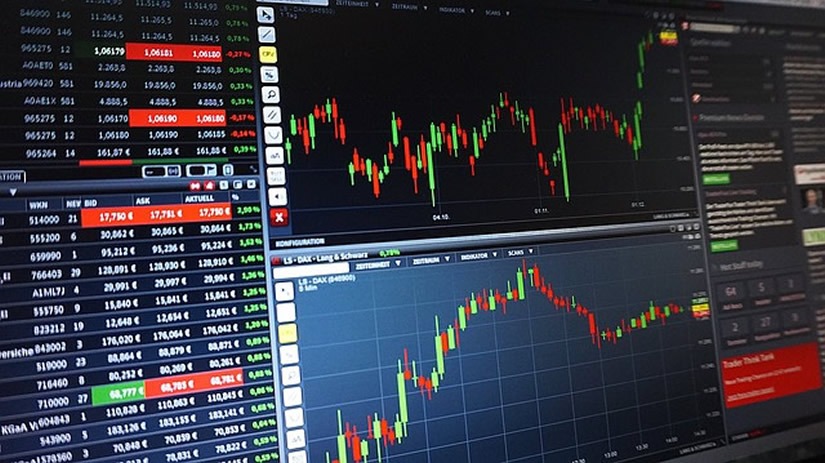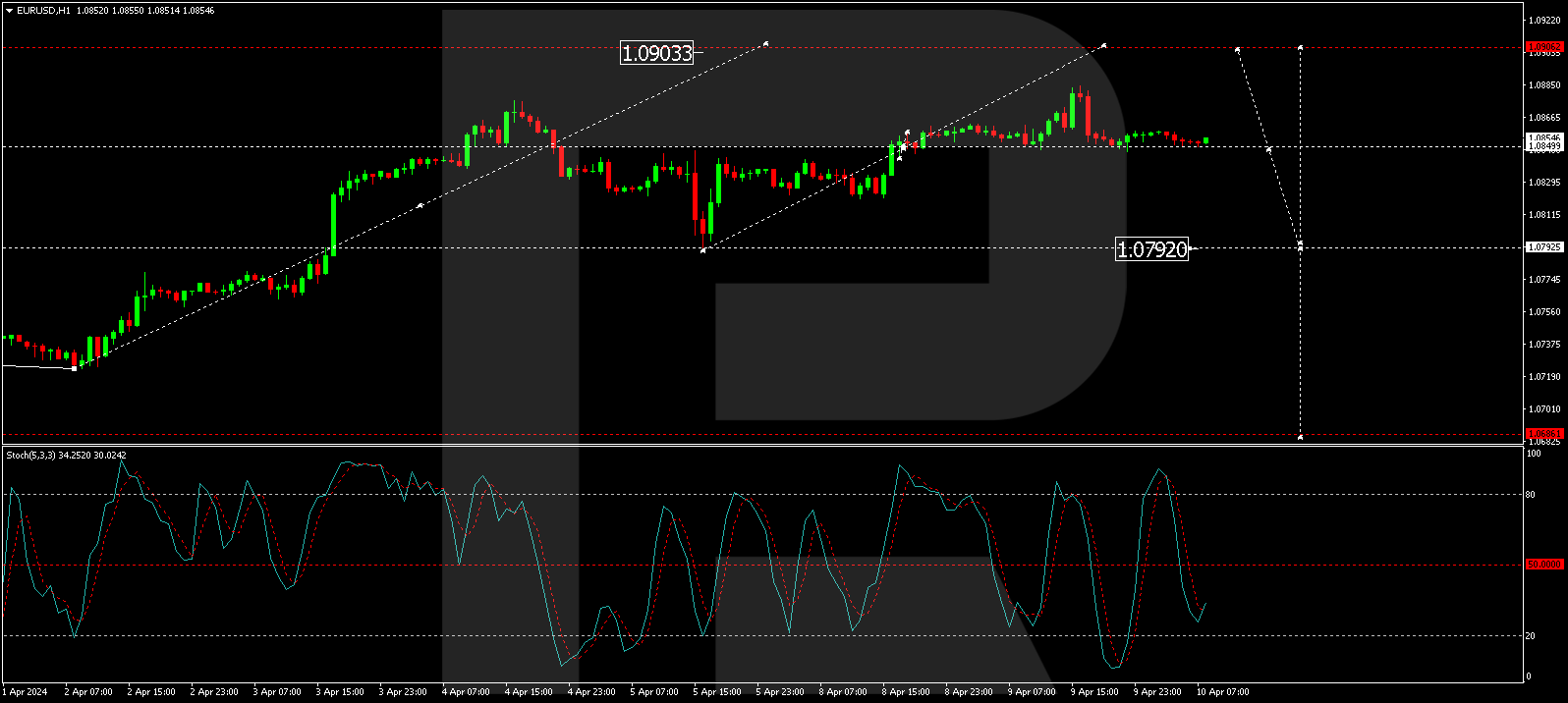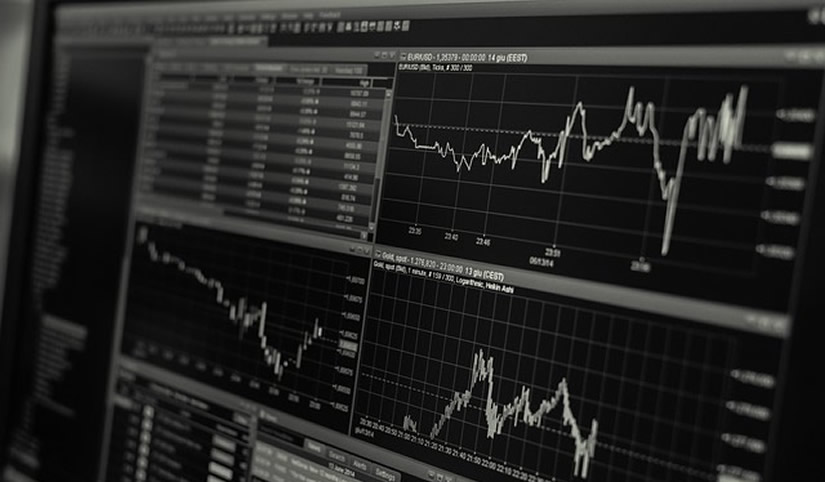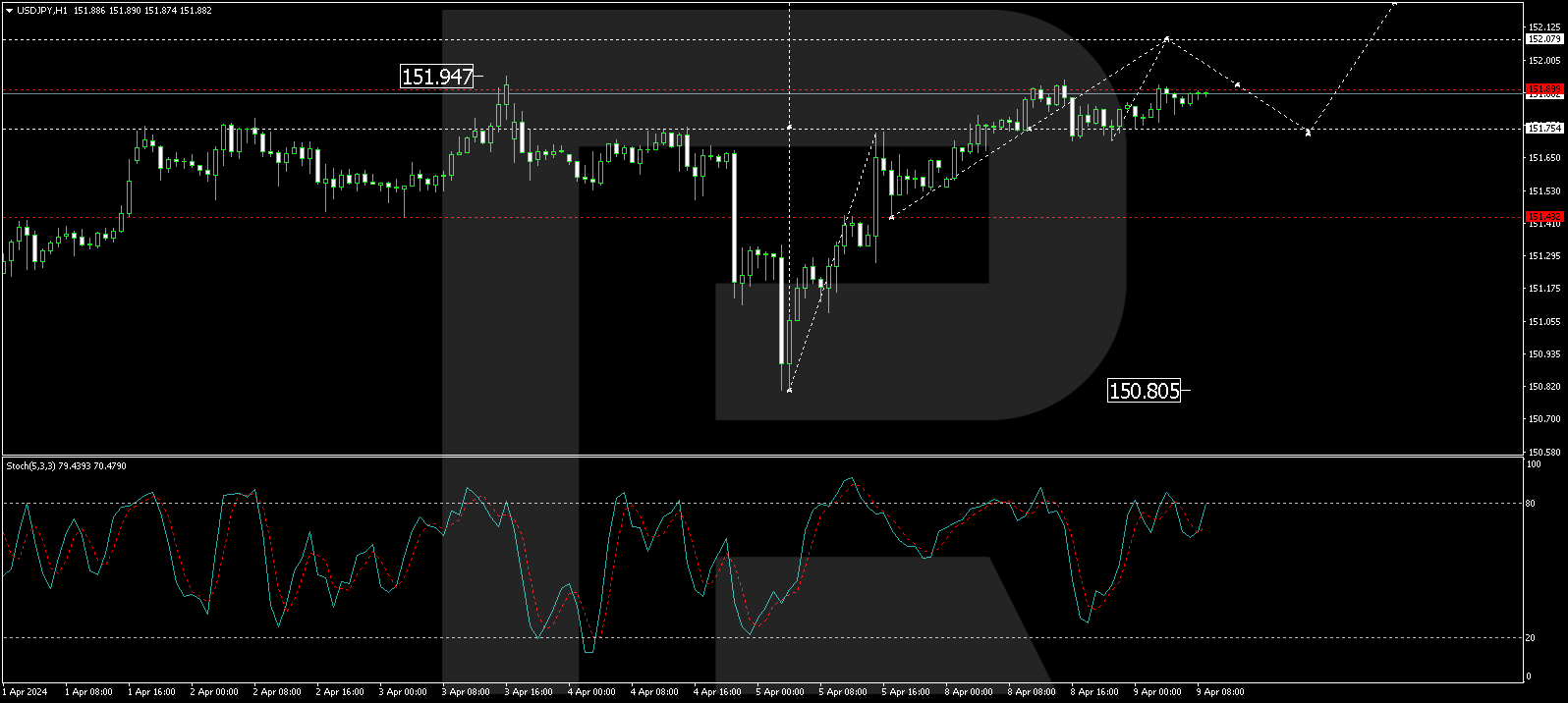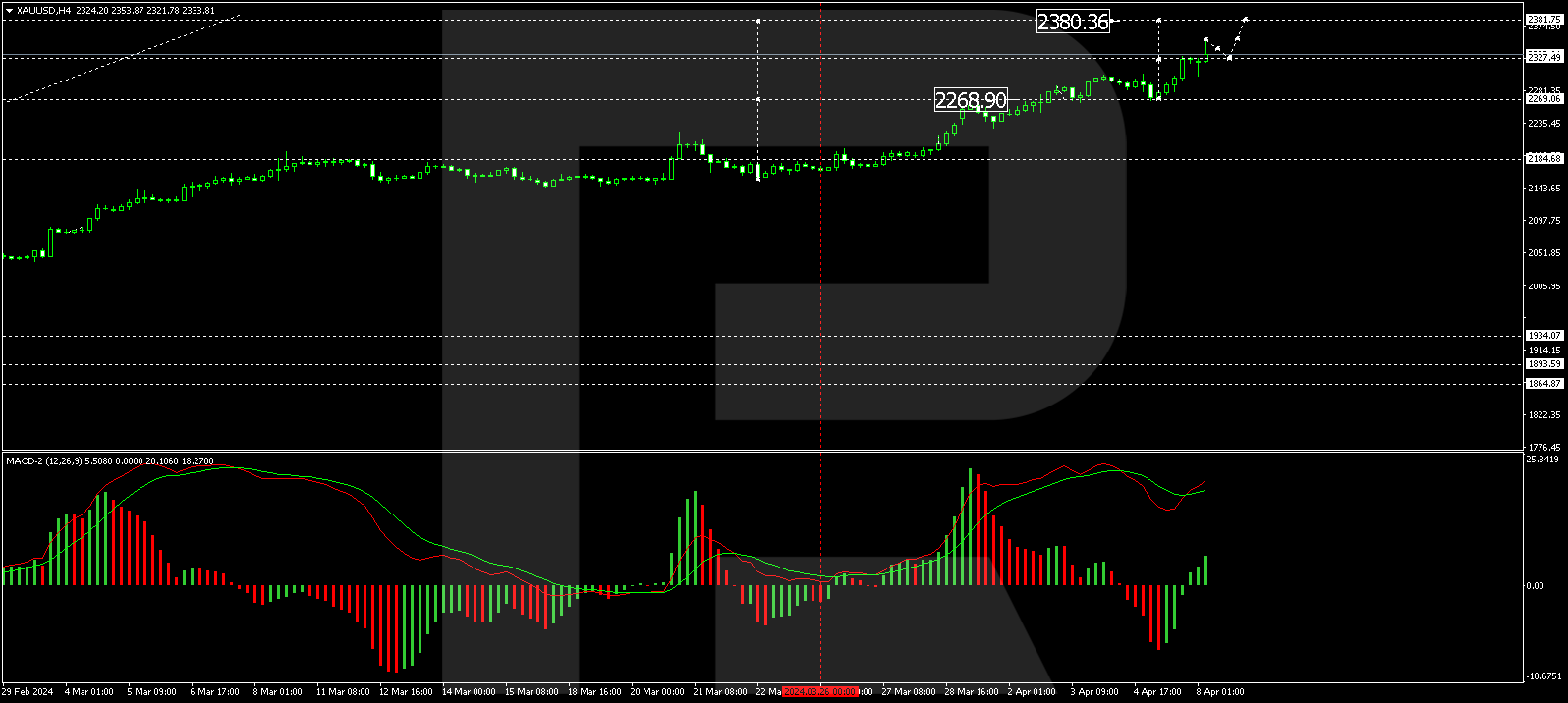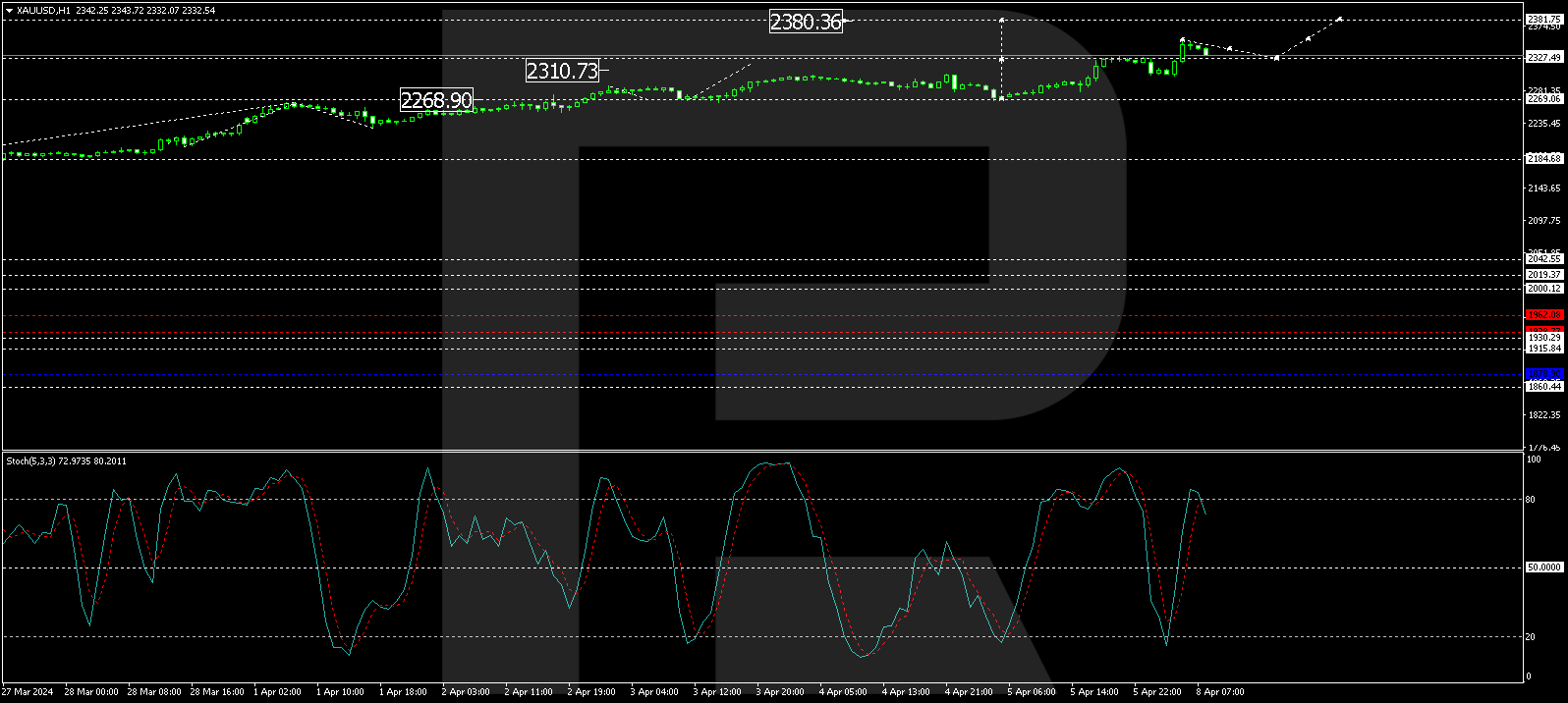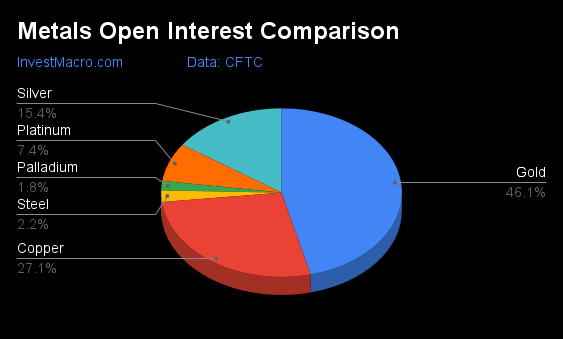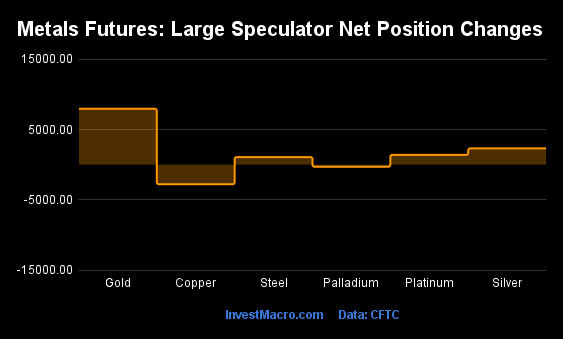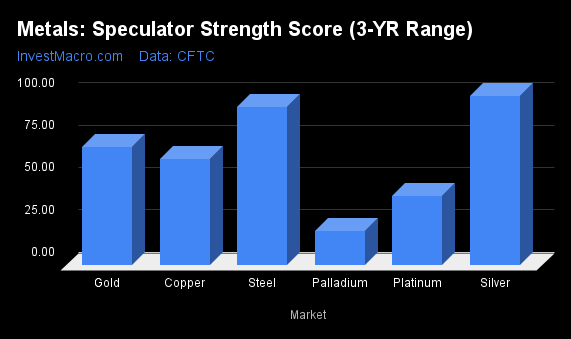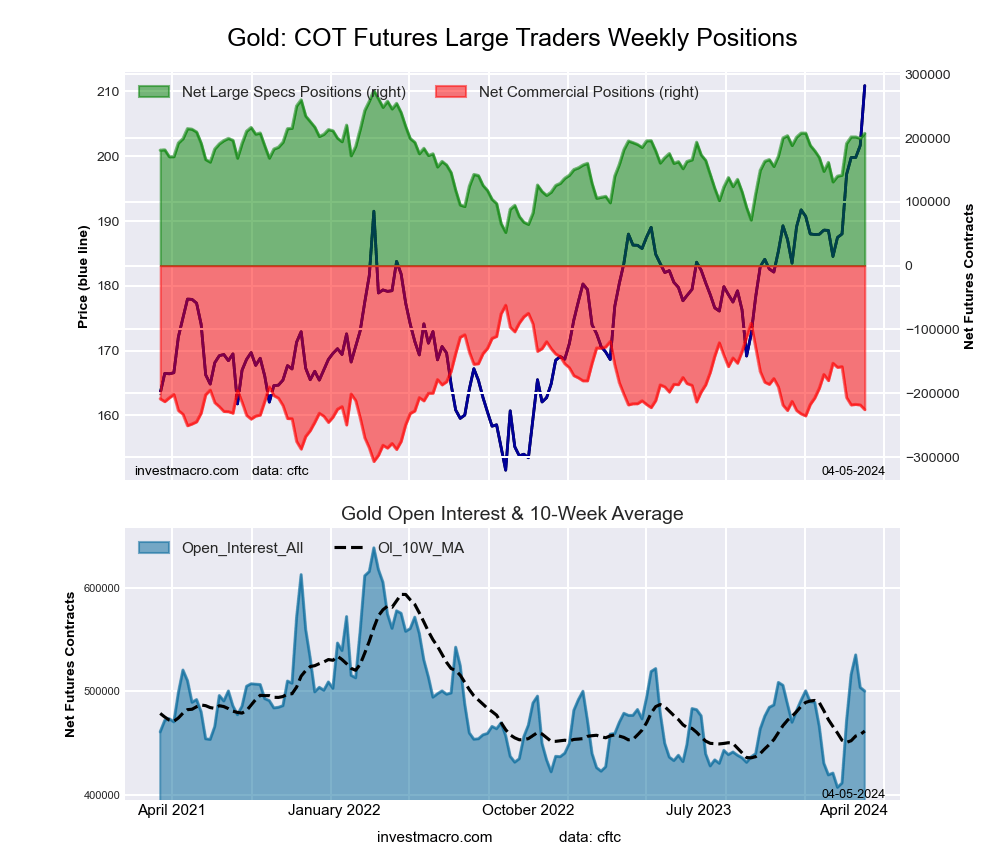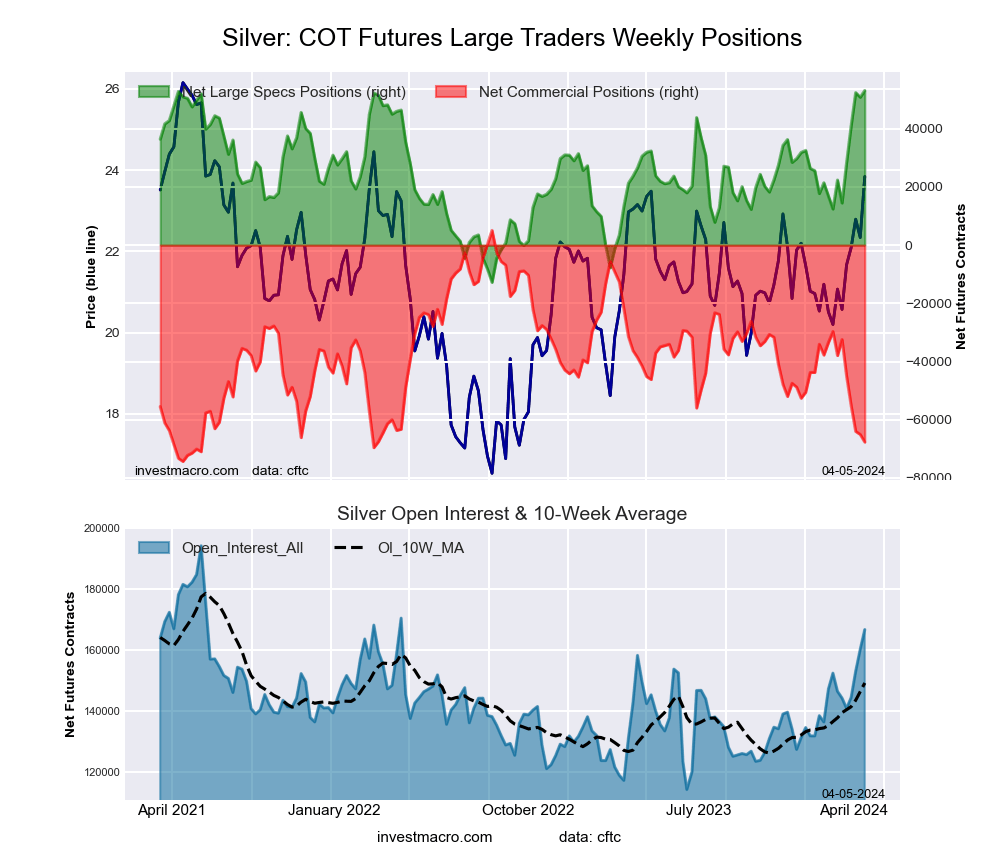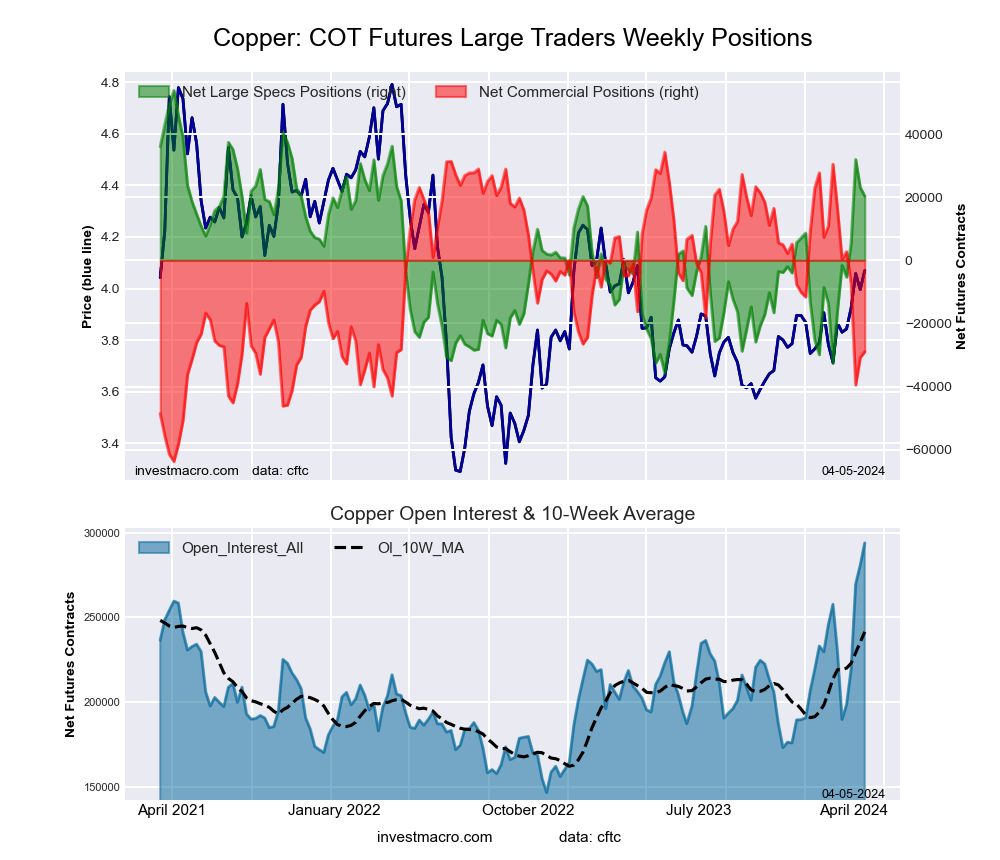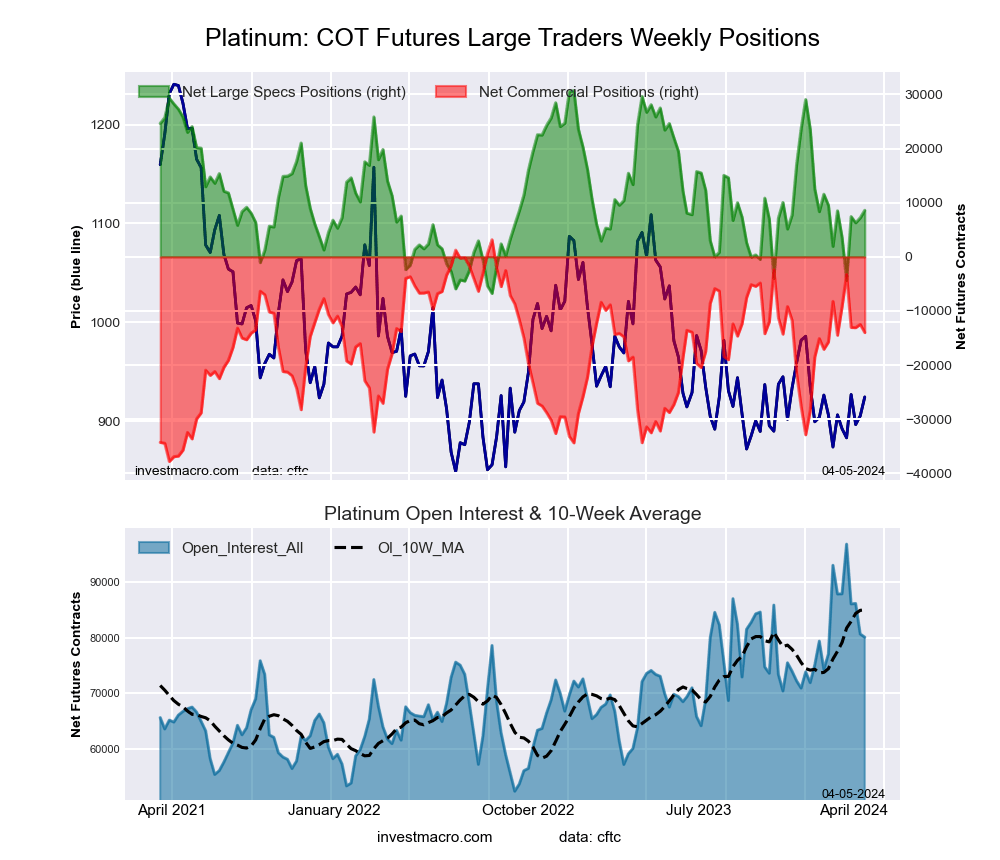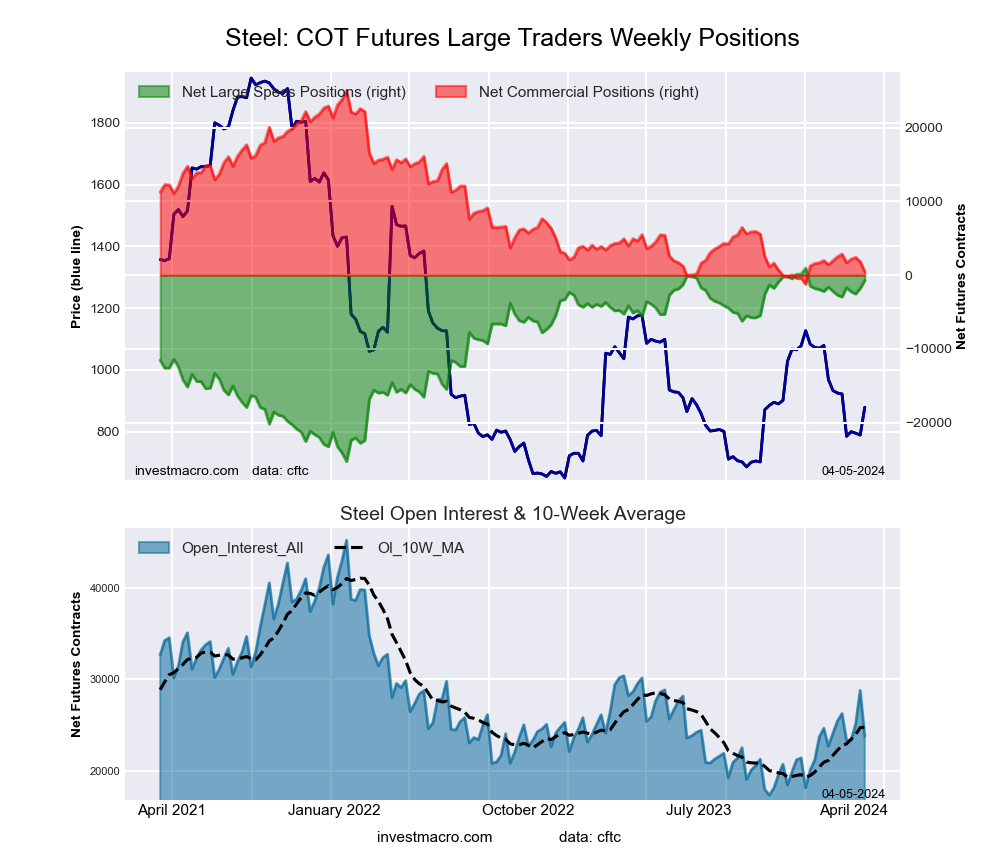By InvestMacro
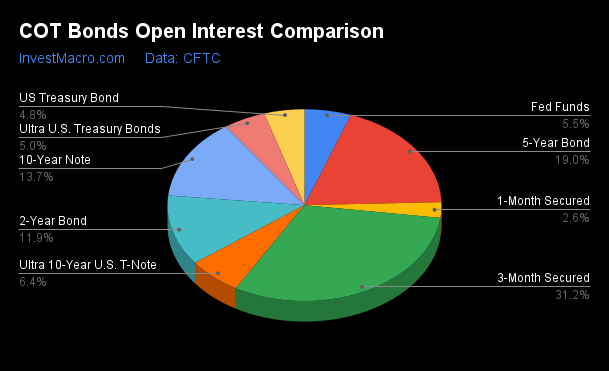
Here are the latest charts and statistics for the Commitment of Traders (COT) reports data published by the Commodities Futures Trading Commission (CFTC).
The latest COT data is updated through Tuesday April 2nd and shows a quick view of how large traders (for-profit speculators and commercial hedgers) were positioned in the futures markets.
Weekly Speculator Changes led by Fed Funds
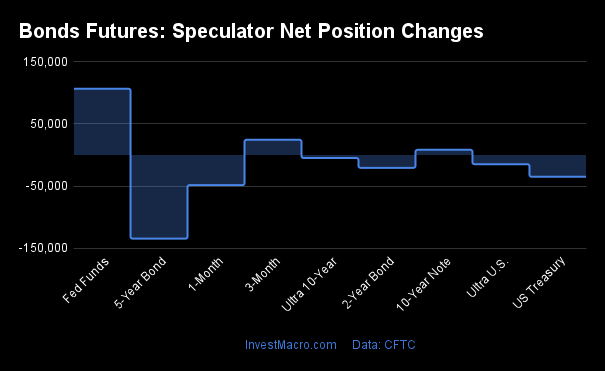
The COT bond market speculator bets were lower this week as three out of the eight bond markets we cover had higher positioning while the other five markets had lower speculator contracts.
Leading the gains for the bond markets was the Fed Funds (106,714 contracts) with the SOFR 3-Months (24,537 contracts) and the 10-Year Bonds (8,350 contracts) also seeing positive weeks.
The bond markets with declines in speculator bets for the week were the 5-Year Bonds (-134,791 contracts), the US Treasury Bonds (-35,105 contracts), the 2-Year Bonds (-20,678 contracts), the Ultra Treasury Bonds (-14,848 contracts) and the Ultra 10-Year Bonds (-4,880 contracts).
Bonds Weekly Net Speculators Leaderboard
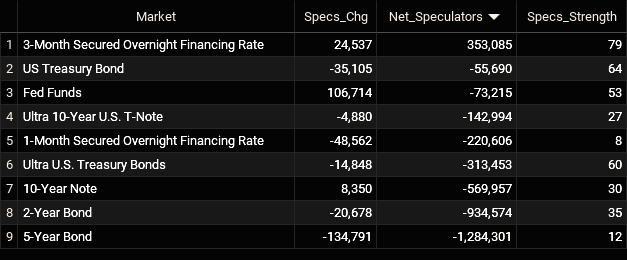
Legend: Weekly Speculators Change | Speculators Current Net Position | Speculators Strength Score compared to last 3-Years (0-100 range)
Strength Scores led by SOFR 3-Months & US Treasury Bonds
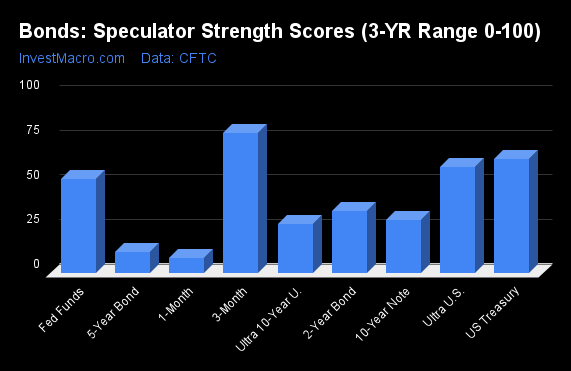
COT Strength Scores (a normalized measure of Speculator positions over a 3-Year range, from 0 to 100 where above 80 is Extreme-Bullish and below 20 is Extreme-Bearish) showed that the SOFR 3-Months (79 percent) and the US Treasury Bonds (64 percent) lead the bond markets this week. The Ultra Treasury Bonds (60 percent) comes in as the next highest in the weekly strength scores.
On the downside, the 5-Year Bonds (12 percent) comes in at the lowest strength level currently and is in Extreme-Bearish territory (below 20 percent). The next lowest strength scores were the Ultra 10-Year Bonds (27 percent), the 10-Year Bonds (30 percent) and the 2-Year Bonds (35 percent).
Strength Statistics:
Fed Funds (52.9 percent) vs Fed Funds previous week (30.1 percent)
2-Year Bond (34.6 percent) vs 2-Year Bond previous week (35.9 percent)
5-Year Bond (11.8 percent) vs 5-Year Bond previous week (20.4 percent)
10-Year Bond (29.8 percent) vs 10-Year Bond previous week (29.1 percent)
Ultra 10-Year Bond (27.4 percent) vs Ultra 10-Year Bond previous week (28.4 percent)
US Treasury Bond (64.1 percent) vs US Treasury Bond previous week (76.3 percent)
Ultra US Treasury Bond (59.6 percent) vs Ultra US Treasury Bond previous week (65.7 percent)
SOFR 3-Months (78.5 percent) vs SOFR 3-Months previous week (77.2 percent)
Fed Funds & 10-Year Bonds top the 6-Week Strength Trends
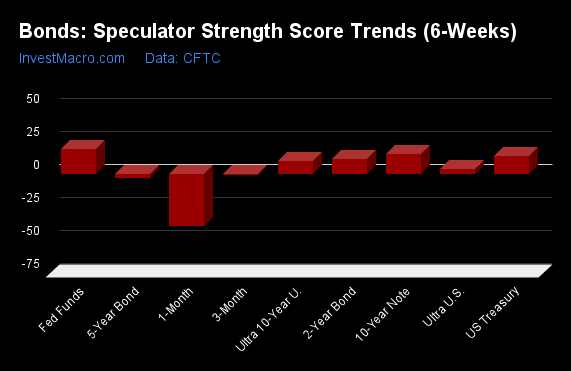
COT Strength Score Trends (or move index, calculates the 6-week changes in strength scores) showed that the Fed Funds (19 percent) and the 10-Year Bonds (15 percent) lead the past six weeks trends for bonds. The US Treasury Bonds (14 percent) is the next highest positive mover in the latest trends data.
The 5-Year Bonds (-3 percent) and the SOFR 3-Months (-1 percent) lead the downside trend scores currently.
Strength Trend Statistics:
Fed Funds (19.1 percent) vs Fed Funds previous week (-8.1 percent)
2-Year Bond (11.2 percent) vs 2-Year Bond previous week (17.5 percent)
5-Year Bond (-3.3 percent) vs 5-Year Bond previous week (10.7 percent)
10-Year Bond (14.9 percent) vs 10-Year Bond previous week (17.0 percent)
Ultra 10-Year Bond (9.8 percent) vs Ultra 10-Year Bond previous week (18.8 percent)
US Treasury Bond (13.6 percent) vs US Treasury Bond previous week (32.3 percent)
Ultra US Treasury Bond (3.9 percent) vs Ultra US Treasury Bond previous week (15.1 percent)
SOFR 3-Months (-0.8 percent) vs SOFR 3-Months previous week (-13.3 percent)
Secured Overnight Financing Rate (3-Month) Futures:
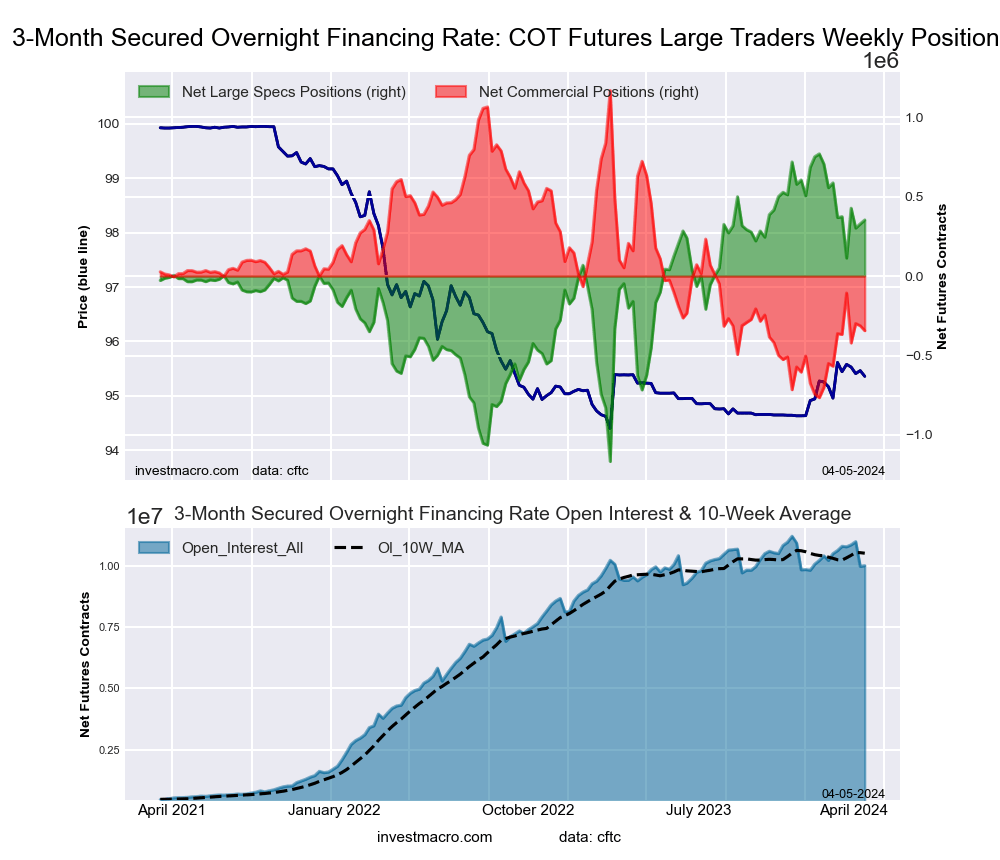 The Secured Overnight Financing Rate (3-Month) large speculator standing this week totaled a net position of 353,085 contracts in the data reported through Tuesday. This was a weekly advance of 24,537 contracts from the previous week which had a total of 328,548 net contracts.
The Secured Overnight Financing Rate (3-Month) large speculator standing this week totaled a net position of 353,085 contracts in the data reported through Tuesday. This was a weekly advance of 24,537 contracts from the previous week which had a total of 328,548 net contracts.
This week’s current strength score (the trader positioning range over the past three years, measured from 0 to 100) shows the speculators are currently Bullish with a score of 78.5 percent. The commercials are Bearish with a score of 21.8 percent and the small traders (not shown in chart) are Bullish-Extreme with a score of 82.7 percent.
Price Trend-Following Model: Weak Uptrend
Our weekly trend-following model classifies the current market price position as: Weak Uptrend. The current action for the model is considered to be: Hold – Maintain Long Position.
| SOFR 3-Months Statistics | SPECULATORS | COMMERCIALS | SMALL TRADERS |
| – Percent of Open Interest Longs: | 17.7 | 55.0 | 0.3 |
| – Percent of Open Interest Shorts: | 14.1 | 58.4 | 0.4 |
| – Net Position: | 353,085 | -343,626 | -9,459 |
| – Gross Longs: | 1,769,579 | 5,505,965 | 25,906 |
| – Gross Shorts: | 1,416,494 | 5,849,591 | 35,365 |
| – Long to Short Ratio: | 1.2 to 1 | 0.9 to 1 | 0.7 to 1 |
| NET POSITION TREND: | | | |
| – Strength Index Score (3 Year Range Pct): | 78.5 | 21.8 | 82.7 |
| – Strength Index Reading (3 Year Range): | Bullish | Bearish | Bullish-Extreme |
| NET POSITION MOVEMENT INDEX: | | | |
| – 6-Week Change in Strength Index: | -0.8 | 1.0 | -1.8 |
30-Day Federal Funds Futures:
 The 30-Day Federal Funds large speculator standing this week totaled a net position of -73,215 contracts in the data reported through Tuesday. This was a weekly advance of 106,714 contracts from the previous week which had a total of -179,929 net contracts.
The 30-Day Federal Funds large speculator standing this week totaled a net position of -73,215 contracts in the data reported through Tuesday. This was a weekly advance of 106,714 contracts from the previous week which had a total of -179,929 net contracts.
This week’s current strength score (the trader positioning range over the past three years, measured from 0 to 100) shows the speculators are currently Bullish with a score of 52.9 percent. The commercials are Bearish with a score of 45.4 percent and the small traders (not shown in chart) are Bullish-Extreme with a score of 89.8 percent.
Price Trend-Following Model: Downtrend
Our weekly trend-following model classifies the current market price position as: Downtrend. The current action for the model is considered to be: Hold – Maintain Short Position.
| 30-Day Federal Funds Statistics | SPECULATORS | COMMERCIALS | SMALL TRADERS |
| – Percent of Open Interest Longs: | 12.9 | 69.4 | 2.1 |
| – Percent of Open Interest Shorts: | 17.1 | 65.2 | 2.1 |
| – Net Position: | -73,215 | 73,836 | -621 |
| – Gross Longs: | 227,865 | 1,224,028 | 36,667 |
| – Gross Shorts: | 301,080 | 1,150,192 | 37,288 |
| – Long to Short Ratio: | 0.8 to 1 | 1.1 to 1 | 1.0 to 1 |
| NET POSITION TREND: | | | |
| – Strength Index Score (3 Year Range Pct): | 52.9 | 45.4 | 89.8 |
| – Strength Index Reading (3 Year Range): | Bullish | Bearish | Bullish-Extreme |
| NET POSITION MOVEMENT INDEX: | | | |
| – 6-Week Change in Strength Index: | 19.1 | -20.0 | 9.1 |
2-Year Treasury Note Futures:
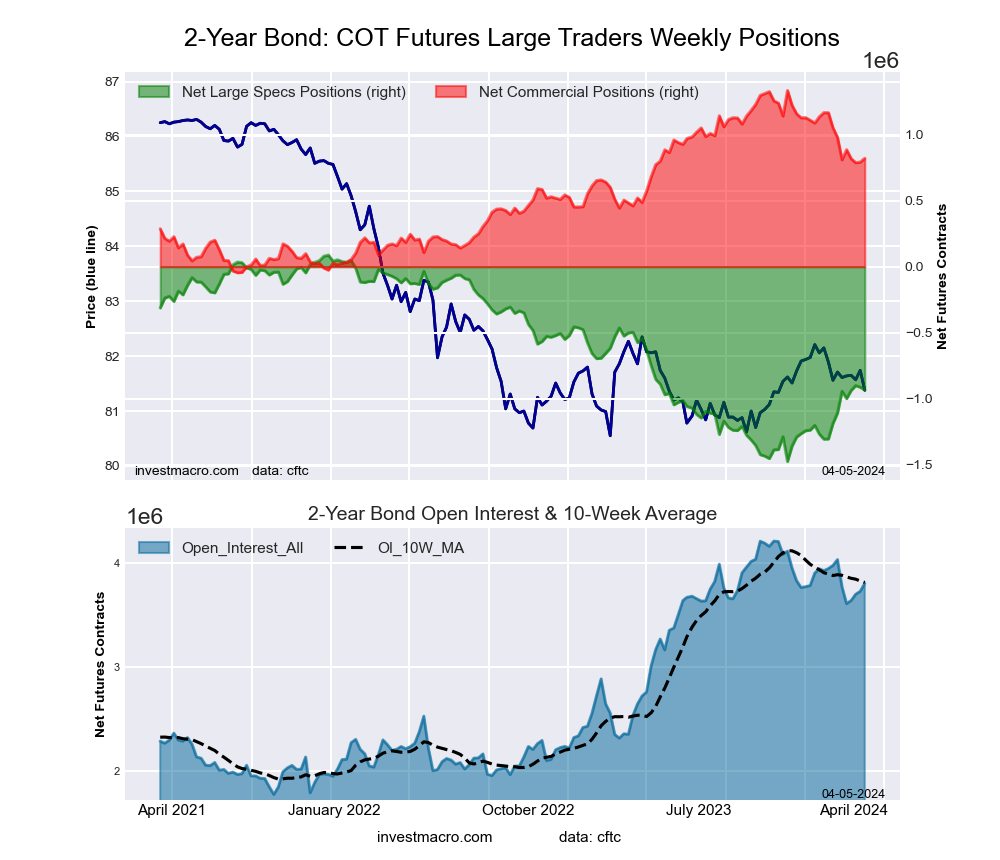 The 2-Year Treasury Note large speculator standing this week totaled a net position of -934,574 contracts in the data reported through Tuesday. This was a weekly decline of -20,678 contracts from the previous week which had a total of -913,896 net contracts.
The 2-Year Treasury Note large speculator standing this week totaled a net position of -934,574 contracts in the data reported through Tuesday. This was a weekly decline of -20,678 contracts from the previous week which had a total of -913,896 net contracts.
This week’s current strength score (the trader positioning range over the past three years, measured from 0 to 100) shows the speculators are currently Bearish with a score of 34.6 percent. The commercials are Bullish with a score of 62.8 percent and the small traders (not shown in chart) are Bullish-Extreme with a score of 87.0 percent.
Price Trend-Following Model: Weak Uptrend
Our weekly trend-following model classifies the current market price position as: Weak Uptrend. The current action for the model is considered to be: Hold – Maintain Long Position.
| 2-Year Treasury Note Statistics | SPECULATORS | COMMERCIALS | SMALL TRADERS |
| – Percent of Open Interest Longs: | 11.6 | 79.3 | 6.6 |
| – Percent of Open Interest Shorts: | 36.2 | 57.7 | 3.6 |
| – Net Position: | -934,574 | 821,385 | 113,189 |
| – Gross Longs: | 442,394 | 3,013,756 | 251,456 |
| – Gross Shorts: | 1,376,968 | 2,192,371 | 138,267 |
| – Long to Short Ratio: | 0.3 to 1 | 1.4 to 1 | 1.8 to 1 |
| NET POSITION TREND: | | | |
| – Strength Index Score (3 Year Range Pct): | 34.6 | 62.8 | 87.0 |
| – Strength Index Reading (3 Year Range): | Bearish | Bullish | Bullish-Extreme |
| NET POSITION MOVEMENT INDEX: | | | |
| – 6-Week Change in Strength Index: | 11.2 | -11.5 | -6.0 |
5-Year Treasury Note Futures:
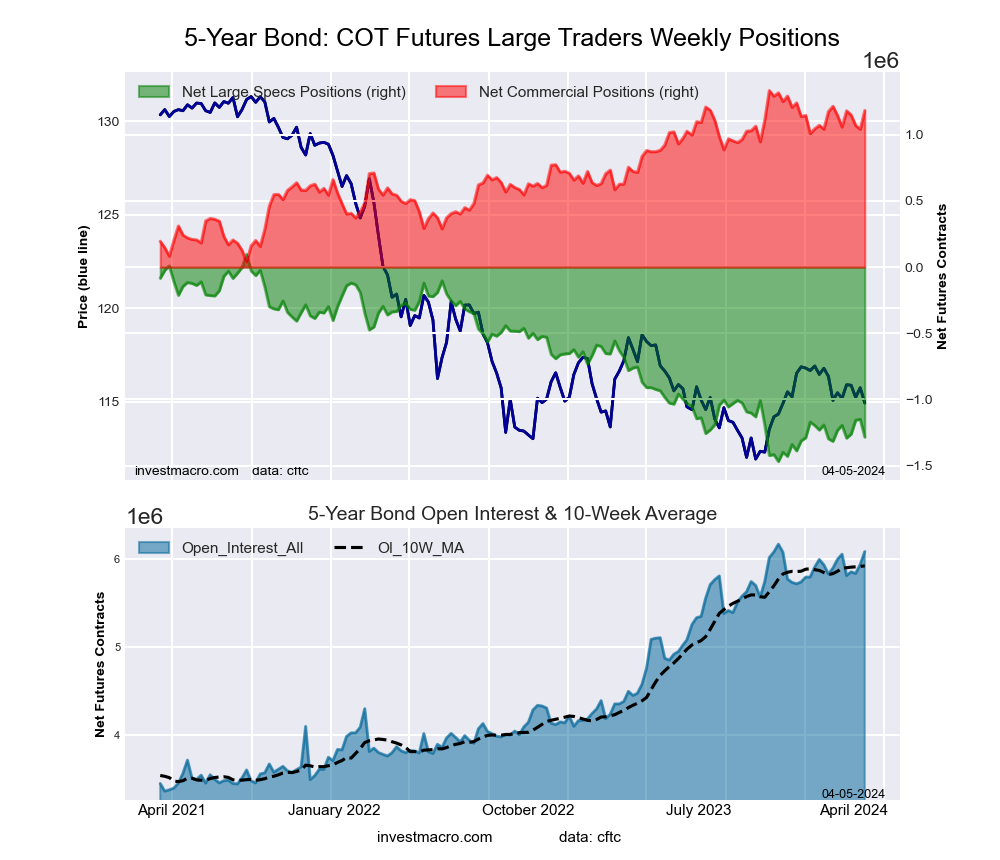 The 5-Year Treasury Note large speculator standing this week totaled a net position of -1,284,301 contracts in the data reported through Tuesday. This was a weekly fall of -134,791 contracts from the previous week which had a total of -1,149,510 net contracts.
The 5-Year Treasury Note large speculator standing this week totaled a net position of -1,284,301 contracts in the data reported through Tuesday. This was a weekly fall of -134,791 contracts from the previous week which had a total of -1,149,510 net contracts.
This week’s current strength score (the trader positioning range over the past three years, measured from 0 to 100) shows the speculators are currently Bearish-Extreme with a score of 11.8 percent. The commercials are Bullish-Extreme with a score of 88.4 percent and the small traders (not shown in chart) are Bullish-Extreme with a score of 84.2 percent.
Price Trend-Following Model: Strong Downtrend
Our weekly trend-following model classifies the current market price position as: Strong Downtrend. The current action for the model is considered to be: New Sell – Short Position.
| 5-Year Treasury Note Statistics | SPECULATORS | COMMERCIALS | SMALL TRADERS |
| – Percent of Open Interest Longs: | 6.1 | 84.7 | 6.7 |
| – Percent of Open Interest Shorts: | 27.2 | 65.2 | 5.1 |
| – Net Position: | -1,284,301 | 1,183,655 | 100,646 |
| – Gross Longs: | 374,032 | 5,155,365 | 410,424 |
| – Gross Shorts: | 1,658,333 | 3,971,710 | 309,778 |
| – Long to Short Ratio: | 0.2 to 1 | 1.3 to 1 | 1.3 to 1 |
| NET POSITION TREND: | | | |
| – Strength Index Score (3 Year Range Pct): | 11.8 | 88.4 | 84.2 |
| – Strength Index Reading (3 Year Range): | Bearish-Extreme | Bullish-Extreme | Bullish-Extreme |
| NET POSITION MOVEMENT INDEX: | | | |
| – 6-Week Change in Strength Index: | -3.3 | 2.9 | 2.9 |
10-Year Treasury Note Futures:
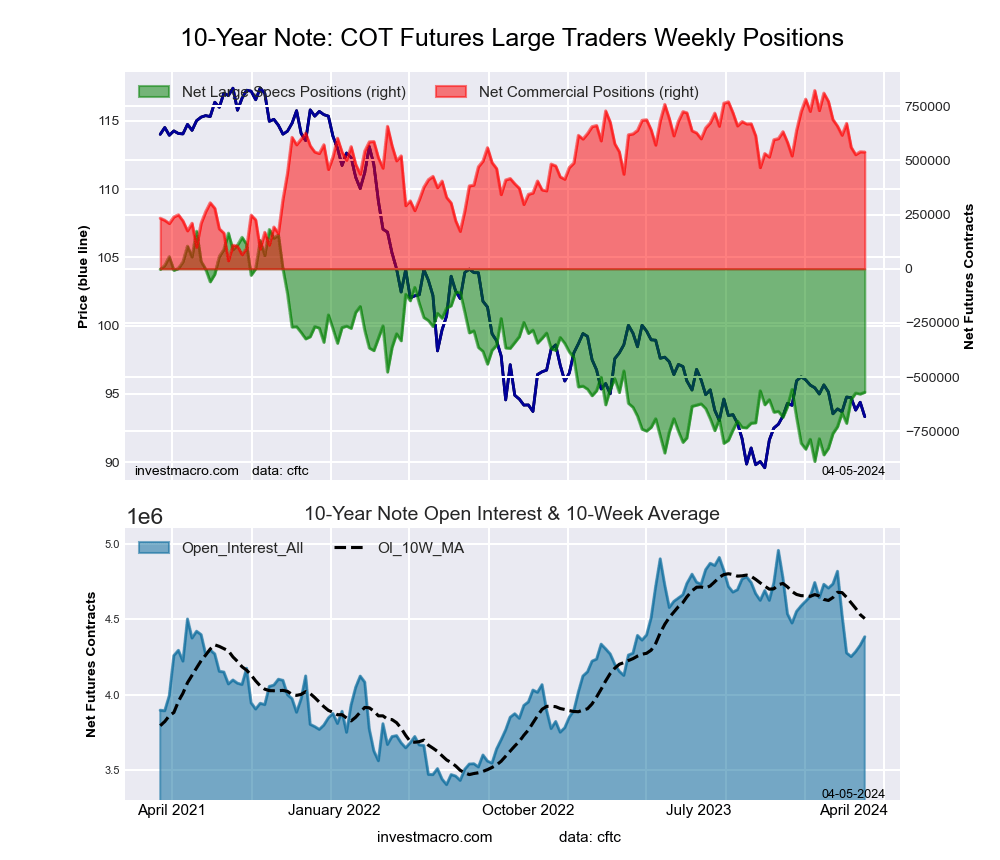 The 10-Year Treasury Note large speculator standing this week totaled a net position of -569,957 contracts in the data reported through Tuesday. This was a weekly gain of 8,350 contracts from the previous week which had a total of -578,307 net contracts.
The 10-Year Treasury Note large speculator standing this week totaled a net position of -569,957 contracts in the data reported through Tuesday. This was a weekly gain of 8,350 contracts from the previous week which had a total of -578,307 net contracts.
This week’s current strength score (the trader positioning range over the past three years, measured from 0 to 100) shows the speculators are currently Bearish with a score of 29.8 percent. The commercials are Bullish with a score of 63.9 percent and the small traders (not shown in chart) are Bullish-Extreme with a score of 80.3 percent.
Price Trend-Following Model: Strong Downtrend
Our weekly trend-following model classifies the current market price position as: Strong Downtrend. The current action for the model is considered to be: New Sell – Short Position.
| 10-Year Treasury Note Statistics | SPECULATORS | COMMERCIALS | SMALL TRADERS |
| – Percent of Open Interest Longs: | 10.1 | 77.6 | 9.8 |
| – Percent of Open Interest Shorts: | 23.1 | 65.3 | 9.1 |
| – Net Position: | -569,957 | 538,818 | 31,139 |
| – Gross Longs: | 445,011 | 3,402,179 | 429,927 |
| – Gross Shorts: | 1,014,968 | 2,863,361 | 398,788 |
| – Long to Short Ratio: | 0.4 to 1 | 1.2 to 1 | 1.1 to 1 |
| NET POSITION TREND: | | | |
| – Strength Index Score (3 Year Range Pct): | 29.8 | 63.9 | 80.3 |
| – Strength Index Reading (3 Year Range): | Bearish | Bullish | Bullish-Extreme |
| NET POSITION MOVEMENT INDEX: | | | |
| – 6-Week Change in Strength Index: | 14.9 | -15.2 | -8.6 |
Ultra 10-Year Notes Futures:
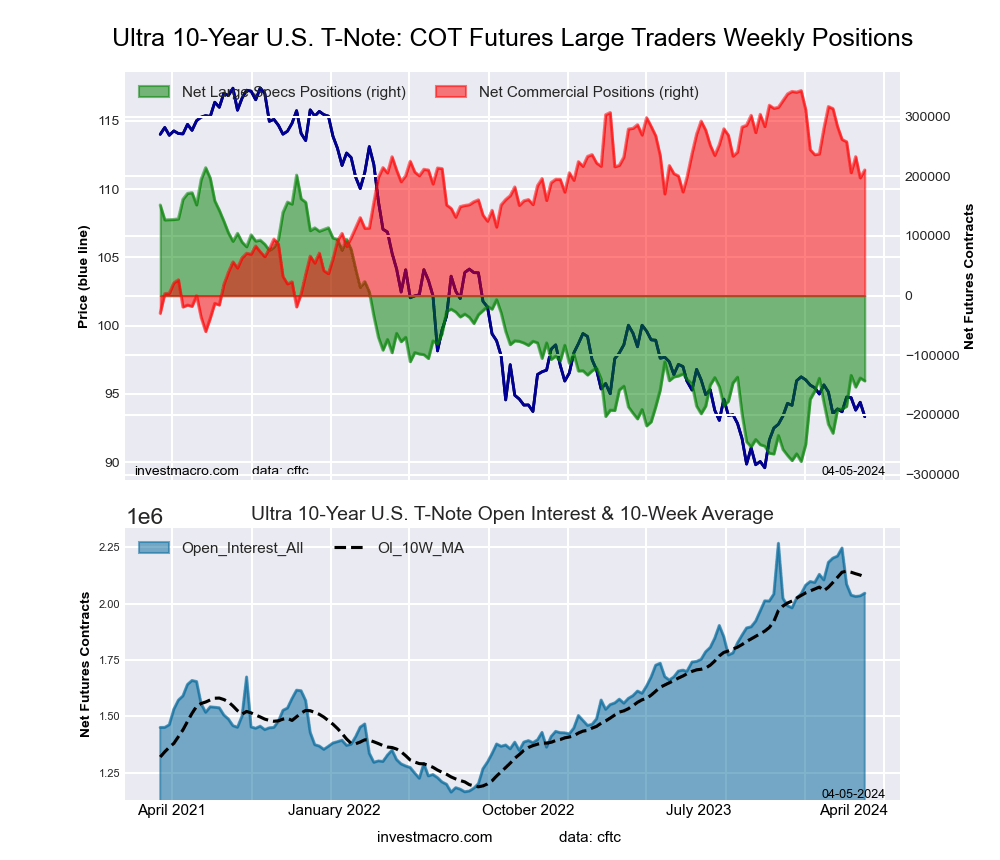 The Ultra 10-Year Notes large speculator standing this week totaled a net position of -142,994 contracts in the data reported through Tuesday. This was a weekly fall of -4,880 contracts from the previous week which had a total of -138,114 net contracts.
The Ultra 10-Year Notes large speculator standing this week totaled a net position of -142,994 contracts in the data reported through Tuesday. This was a weekly fall of -4,880 contracts from the previous week which had a total of -138,114 net contracts.
This week’s current strength score (the trader positioning range over the past three years, measured from 0 to 100) shows the speculators are currently Bearish with a score of 27.4 percent. The commercials are Bullish with a score of 67.0 percent and the small traders (not shown in chart) are Bullish with a score of 73.8 percent.
Price Trend-Following Model: Weak Uptrend
Our weekly trend-following model classifies the current market price position as: Weak Uptrend. The current action for the model is considered to be: Hold – Maintain Long Position.
| Ultra 10-Year Notes Statistics | SPECULATORS | COMMERCIALS | SMALL TRADERS |
| – Percent of Open Interest Longs: | 14.4 | 73.3 | 10.5 |
| – Percent of Open Interest Shorts: | 21.4 | 63.0 | 13.8 |
| – Net Position: | -142,994 | 210,721 | -67,727 |
| – Gross Longs: | 295,548 | 1,499,959 | 214,856 |
| – Gross Shorts: | 438,542 | 1,289,238 | 282,583 |
| – Long to Short Ratio: | 0.7 to 1 | 1.2 to 1 | 0.8 to 1 |
| NET POSITION TREND: | | | |
| – Strength Index Score (3 Year Range Pct): | 27.4 | 67.0 | 73.8 |
| – Strength Index Reading (3 Year Range): | Bearish | Bullish | Bullish |
| NET POSITION MOVEMENT INDEX: | | | |
| – 6-Week Change in Strength Index: | 9.8 | -18.0 | 14.8 |
US Treasury Bonds Futures:
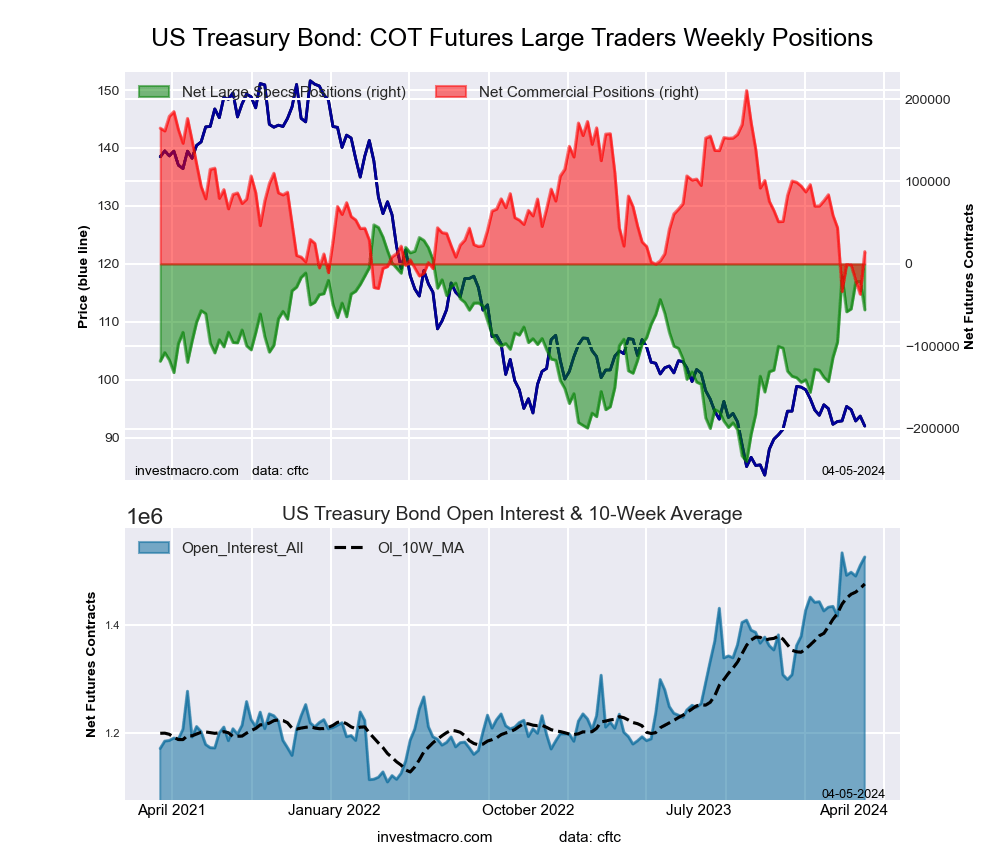 The US Treasury Bonds large speculator standing this week totaled a net position of -55,690 contracts in the data reported through Tuesday. This was a weekly lowering of -35,105 contracts from the previous week which had a total of -20,585 net contracts.
The US Treasury Bonds large speculator standing this week totaled a net position of -55,690 contracts in the data reported through Tuesday. This was a weekly lowering of -35,105 contracts from the previous week which had a total of -20,585 net contracts.
This week’s current strength score (the trader positioning range over the past three years, measured from 0 to 100) shows the speculators are currently Bullish with a score of 64.1 percent. The commercials are Bearish with a score of 20.9 percent and the small traders (not shown in chart) are Bullish with a score of 78.1 percent.
Price Trend-Following Model: Strong Downtrend
Our weekly trend-following model classifies the current market price position as: Strong Downtrend. The current action for the model is considered to be: New Sell – Short Position.
| US Treasury Bonds Statistics | SPECULATORS | COMMERCIALS | SMALL TRADERS |
| – Percent of Open Interest Longs: | 15.4 | 69.8 | 13.6 |
| – Percent of Open Interest Shorts: | 19.0 | 68.8 | 10.9 |
| – Net Position: | -55,690 | 14,907 | 40,783 |
| – Gross Longs: | 235,043 | 1,065,632 | 207,214 |
| – Gross Shorts: | 290,733 | 1,050,725 | 166,431 |
| – Long to Short Ratio: | 0.8 to 1 | 1.0 to 1 | 1.2 to 1 |
| NET POSITION TREND: | | | |
| – Strength Index Score (3 Year Range Pct): | 64.1 | 20.9 | 78.1 |
| – Strength Index Reading (3 Year Range): | Bullish | Bearish | Bullish |
| NET POSITION MOVEMENT INDEX: | | | |
| – 6-Week Change in Strength Index: | 13.6 | -11.7 | -7.4 |
Ultra US Treasury Bonds Futures:
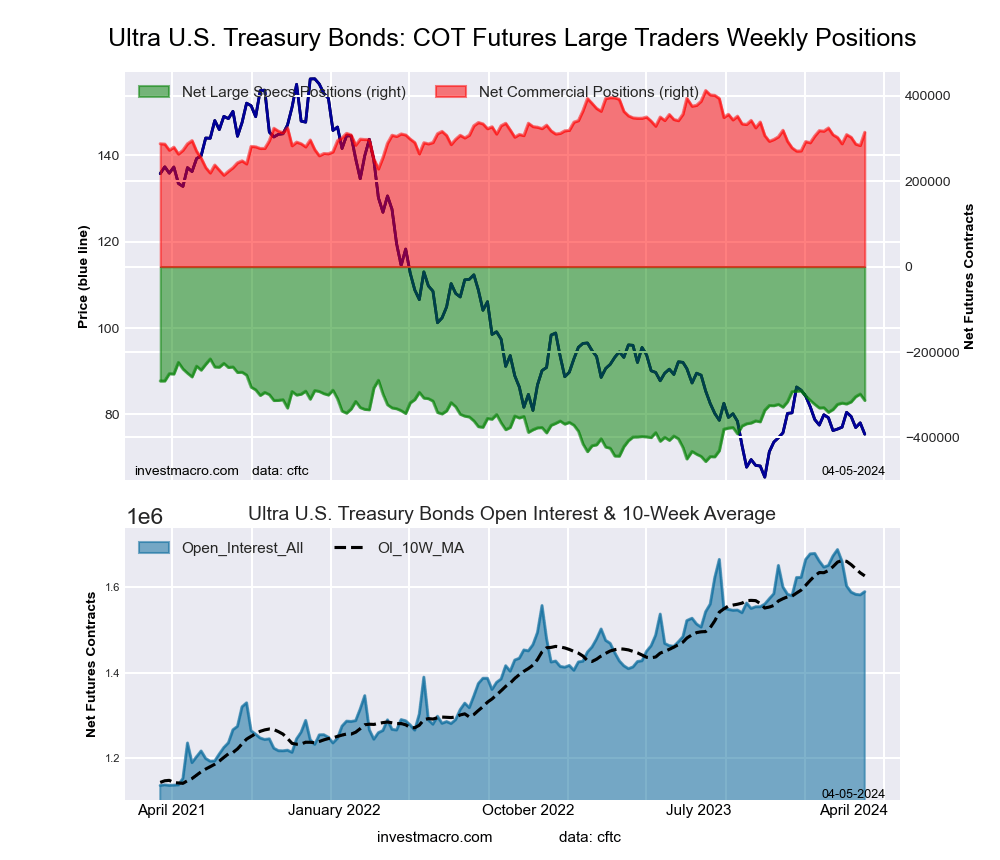 The Ultra US Treasury Bonds large speculator standing this week totaled a net position of -313,453 contracts in the data reported through Tuesday. This was a weekly decline of -14,848 contracts from the previous week which had a total of -298,605 net contracts.
The Ultra US Treasury Bonds large speculator standing this week totaled a net position of -313,453 contracts in the data reported through Tuesday. This was a weekly decline of -14,848 contracts from the previous week which had a total of -298,605 net contracts.
This week’s current strength score (the trader positioning range over the past three years, measured from 0 to 100) shows the speculators are currently Bullish with a score of 59.6 percent. The commercials are Bullish with a score of 50.7 percent and the small traders (not shown in chart) are Bearish with a score of 35.9 percent.
Price Trend-Following Model: Strong Downtrend
Our weekly trend-following model classifies the current market price position as: Strong Downtrend. The current action for the model is considered to be: New Sell – Short Position.
| Ultra US Treasury Bonds Statistics | SPECULATORS | COMMERCIALS | SMALL TRADERS |
| – Percent of Open Interest Longs: | 9.1 | 79.6 | 11.1 |
| – Percent of Open Interest Shorts: | 28.8 | 59.8 | 11.2 |
| – Net Position: | -313,453 | 314,753 | -1,300 |
| – Gross Longs: | 144,656 | 1,264,584 | 176,663 |
| – Gross Shorts: | 458,109 | 949,831 | 177,963 |
| – Long to Short Ratio: | 0.3 to 1 | 1.3 to 1 | 1.0 to 1 |
| NET POSITION TREND: | | | |
| – Strength Index Score (3 Year Range Pct): | 59.6 | 50.7 | 35.9 |
| – Strength Index Reading (3 Year Range): | Bullish | Bullish | Bearish |
| NET POSITION MOVEMENT INDEX: | | | |
| – 6-Week Change in Strength Index: | 3.9 | 6.1 | -20.2 |
Article By InvestMacro – Receive our weekly COT Newsletter
*COT Report: The COT data, released weekly to the public each Friday, is updated through the most recent Tuesday (data is 3 days old) and shows a quick view of how large speculators or non-commercials (for-profit traders) were positioned in the futures markets.
The CFTC categorizes trader positions according to commercial hedgers (traders who use futures contracts for hedging as part of the business), non-commercials (large traders who speculate to realize trading profits) and nonreportable traders (usually small traders/speculators) as well as their open interest (contracts open in the market at time of reporting). See CFTC criteria here.




 Article by
Article by 